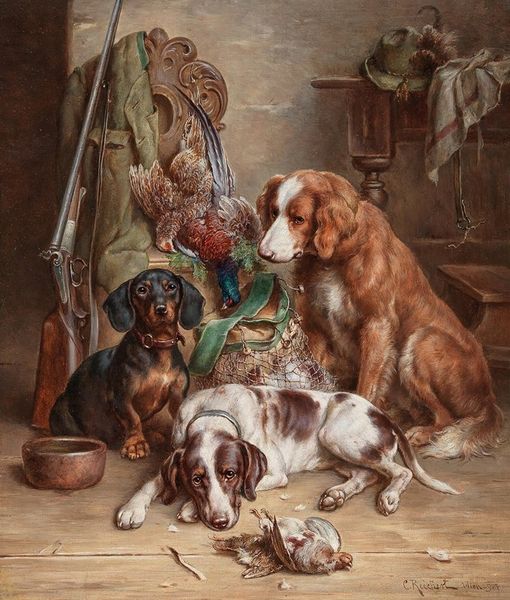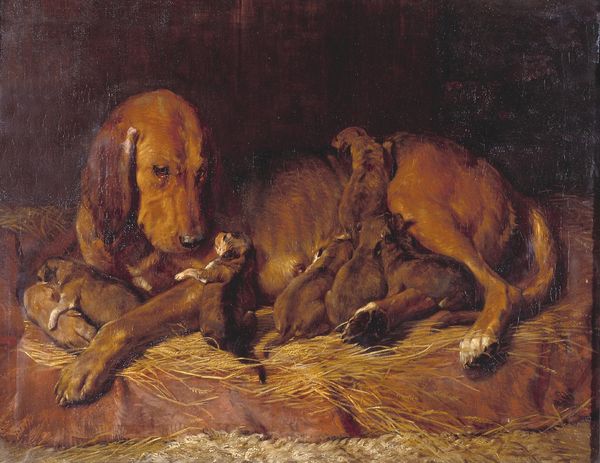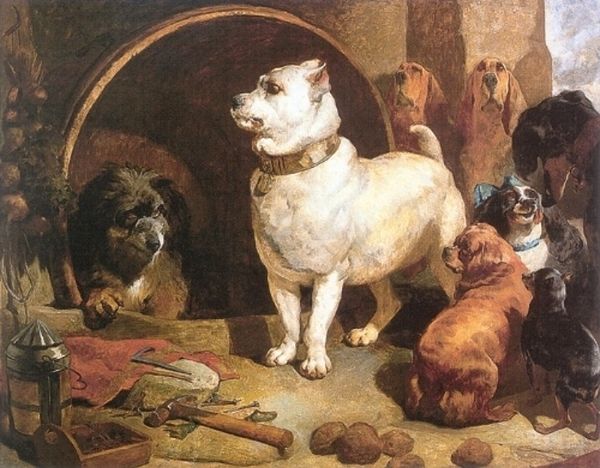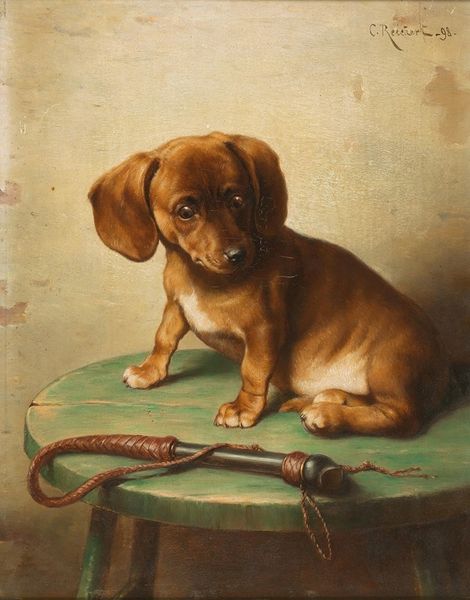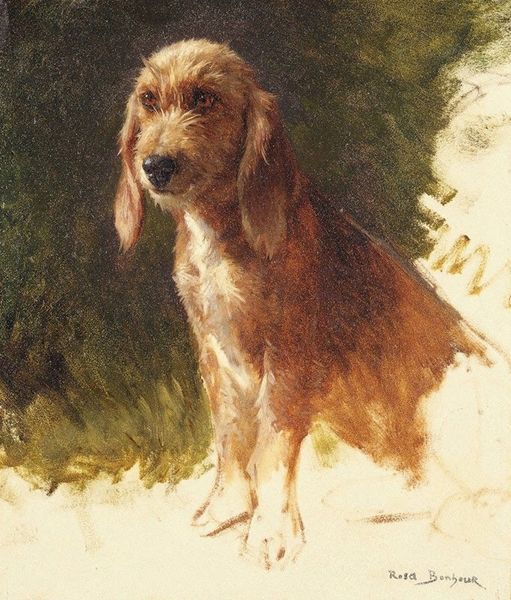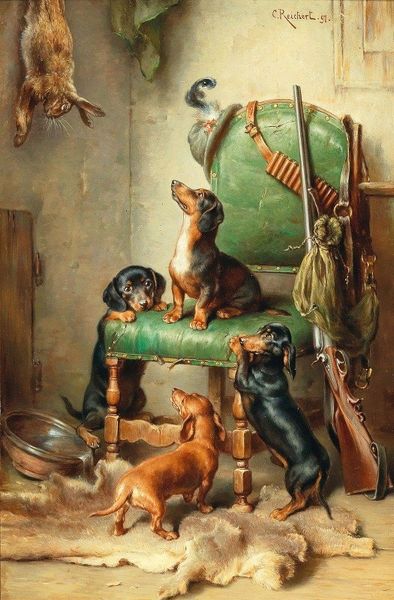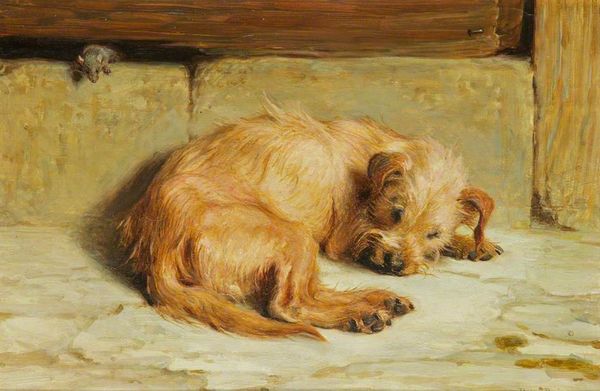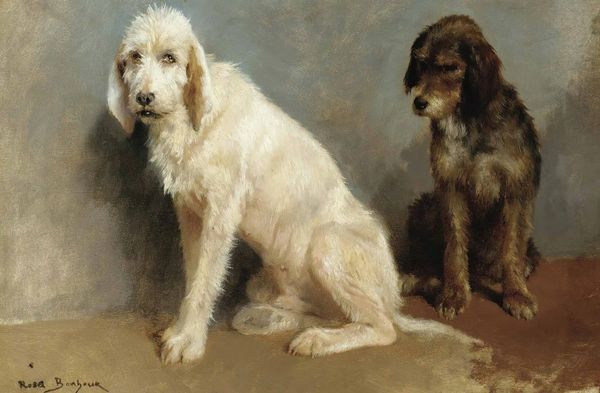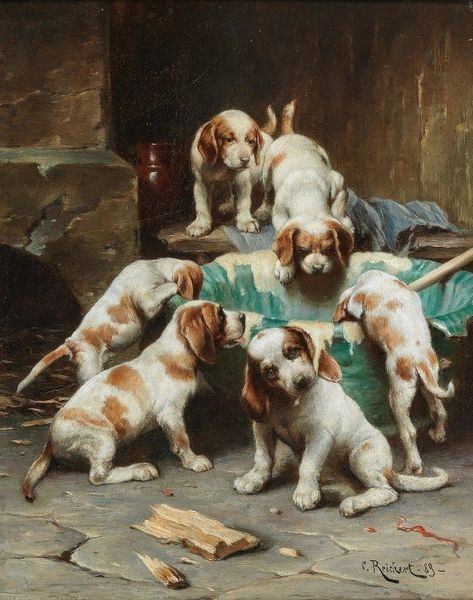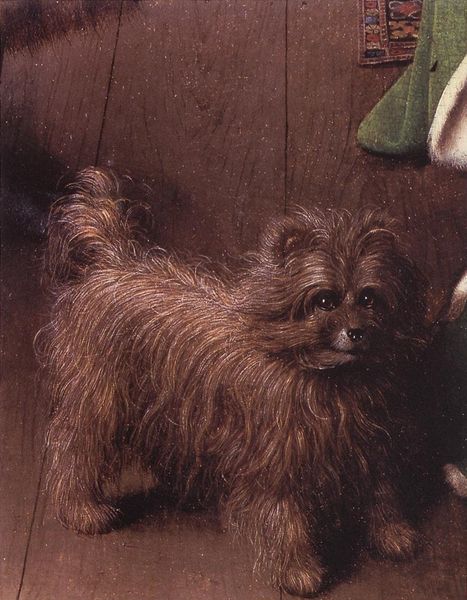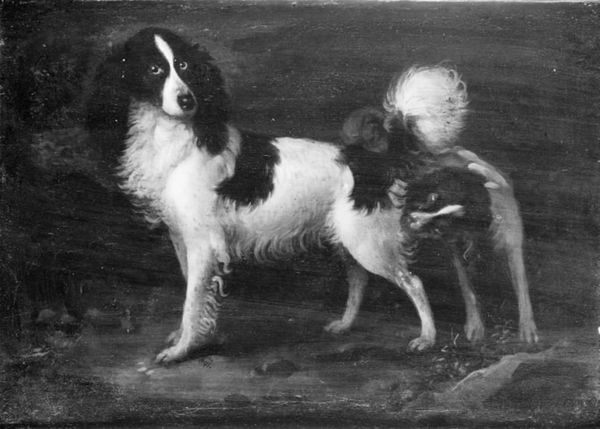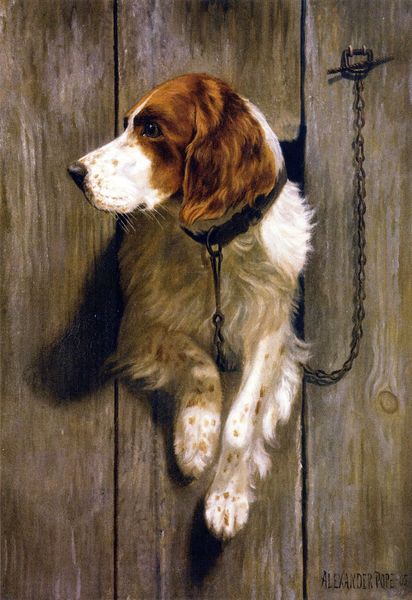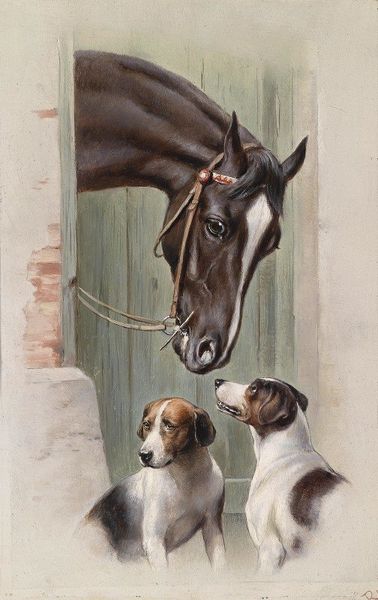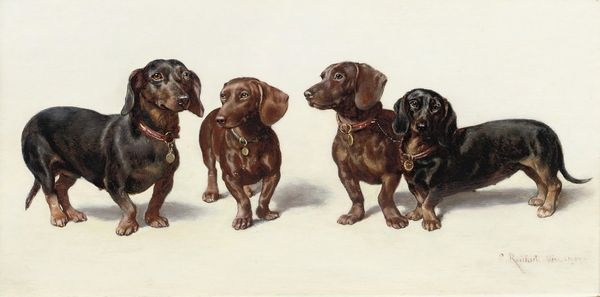
painting, oil-paint
#
portrait
#
animal
#
painting
#
oil-paint
#
dog
#
oil painting
#
romanticism
#
animal portrait
#
genre-painting
Copyright: Public domain
Editor: We’re looking at Edwin Landseer's "Dignity and Impudence," created in 1839. It's an oil painting of two dogs in a doghouse. I find it humorous, mostly because of the expressions Landseer captured. What do you make of this pairing? Curator: It’s a very clever piece of social commentary disguised as a charming animal portrait. Landseer was immensely popular, and Queen Victoria was a patron, in part, because his animal paintings were never *just* about animals. They served as mirrors reflecting human society and class distinctions. Consider the breeds he chose. Editor: Oh, the St. Bernard looks so majestic, almost weary, and the terrier is just… cheeky. So you're saying the dogs are stand-ins for different classes? Curator: Precisely. The "dignity" likely represents the established aristocracy, burdened perhaps by responsibility, while the "impudence" suggests the emerging middle class, pushing against tradition. It's a very Victorian theme: questioning established hierarchies. Editor: I never thought about it that way! It seems that placing them together in the doghouse complicates the narrative of superior vs. inferior dogs even further. Were these paintings common, as a form of social critique? Curator: Animal paintings with moralizing undertones were certainly in vogue, particularly in Britain. They offered a palatable way to discuss sensitive issues, shielded behind sentimentality. The painting’s popularity reinforced its underlying message. Consider the role of museums and galleries back then. How did *they* shape its message? Editor: It makes you wonder how contemporary audiences would receive such direct, albeit subtle, political messages in their art today. I’ll definitely be thinking differently about animal paintings from now on. Thanks! Curator: Indeed. And it demonstrates how art constantly interacts with its socio-political moment, doesn’t it? It is this interaction that enables the continuous dialogue that society has with it, changing its role according to social development.
Comments
No comments
Be the first to comment and join the conversation on the ultimate creative platform.
